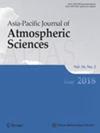Sub-Seasonal Experiment (SubX) Model-based Assessment of the Prediction Skill of Recent Multi-Year South Korea Droughts
Abstract
Abstract
Reliable sub-seasonal forecast of precipitation is essential to manage the risk of multi-year droughts in a timely manner. However, comprehensive assessments of sub-seasonal prediction skill of precipitation remain limited, particularly during multi-year droughts. This study used various verification metrics to assess the sub-seasonal prediction skill of hindcasts of five Sub-seasonal Experiment (SubX) models for precipitation during two recent multi-year South Korea droughts (2007 − 10 and 2013 − 16). Results show that the sub-seasonal prediction skill of the SubX models were stage-, event-, and model-dependent over the recent multi-year droughts. According to the Brier skill scores, SubX models show a more skillful in one to four lead weeks during the drought onset and persistence stages, than the recovery stage. While the prediction skill of the SubX models in the first two initial weeks show more skillful prediction during the 2007–10 drought, the impact of the forecast initial time on the prediction skill is relatively weak during the 2013–16 drought. Overall, the EMC-GEFSv12 model with the 11 ensemble members (the largest among the five SubX models) show the most skillful forecasting skill. According to the sensitivity test to the ensemble member size, the EMC-GEFSv12 model had no gain for biweekly precipitation forecast with the nine ensemble members or more. This study highlights the importance of a robust evaluation of the predictive performance of sub-seasonal climate forecasts via multiple verification metrics.


 求助内容:
求助内容: 应助结果提醒方式:
应助结果提醒方式:


